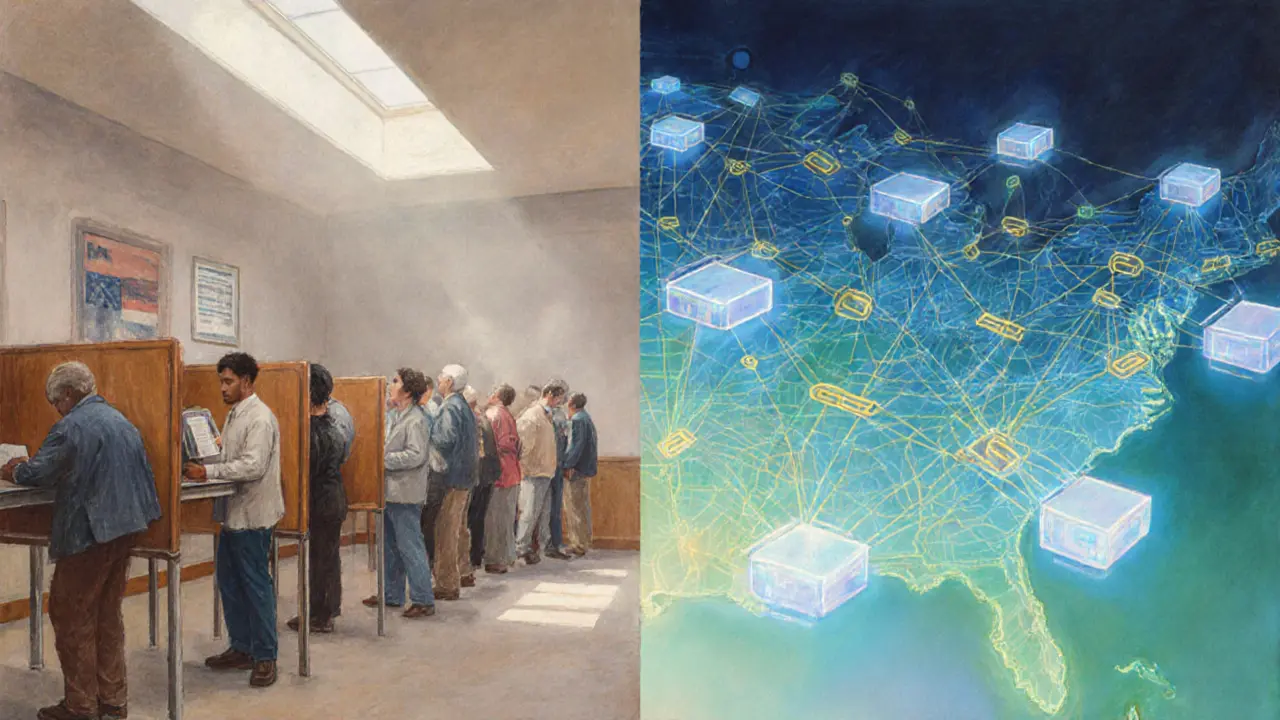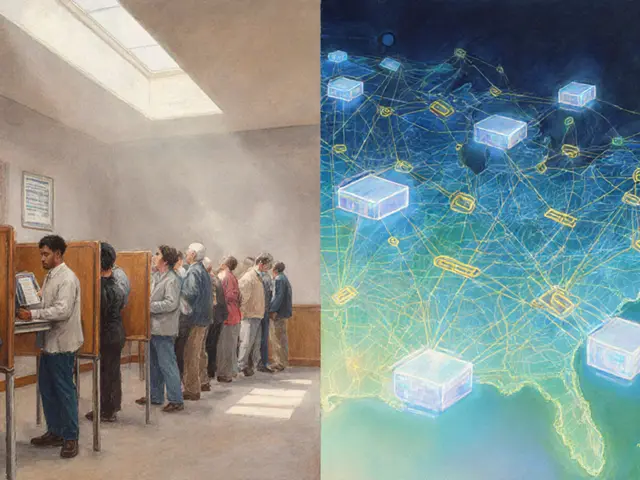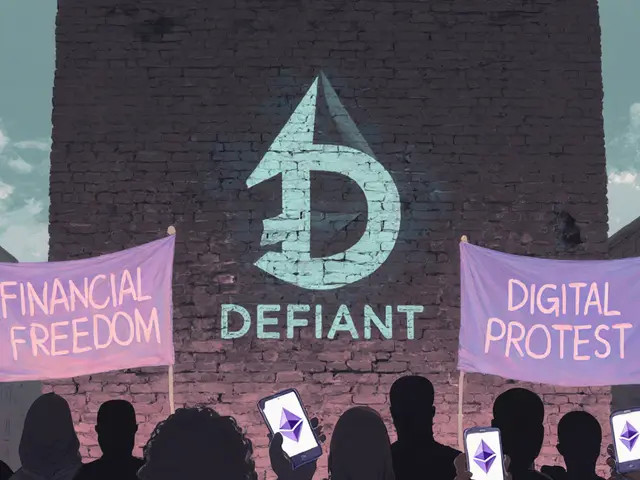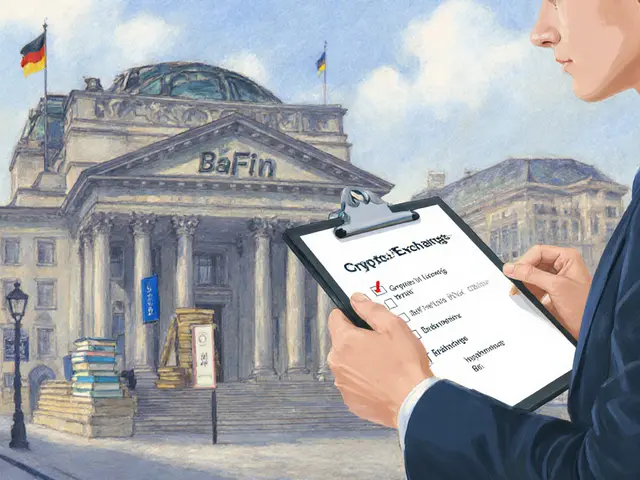Blockchain Voting: Boosting Transparency and Auditability

Blockchain Voting Comparison Tool
Traditional Voting
Relies on centralized systems with potential single points of failure and limited transparency.
Blockchain Voting
Uses distributed ledger technology for enhanced transparency, security, and auditability.
Key Comparison Factors
| Aspect | Traditional System | Blockchain System |
|---|---|---|
| Data Storage | Central server, vulnerable to single-point attacks | Distributed ledger across many nodes |
| Result Verification | Manual recounts, often behind closed doors | Publicly viewable hash chain, instant auditability |
| Tamper Detection | Relies on internal controls and audits | Any hash mismatch triggers network rejection |
| Cost Over Time | Recurring expenses for hardware, transport, personnel | Higher upfront software development, lower per-election operational cost |
| Voter Accessibility | Physical polling places, limited hours | Any internet-connected device, remote voting possible |
Voting Security Analysis
Analysis Results
Enter values and click "Analyze Voting System" to see detailed comparison analysis.
Quick Takeaways
- Blockchain voting records every ballot on an immutable, publicly visible ledger.
- Consensus algorithms ensure that no single party can alter the vote count.
- Pseudonymous credentials keep voter choices private while still allowing full audits.
- Real‑time tallies and smart‑contract enforcement give instant, trustworthy results.
- Scalability, accessibility, and voter education remain the biggest hurdles.
What Is blockchain voting?
At its core, blockchain voting is a digital election system that stores each vote as a transaction on a decentralized ledger. Unlike traditional setups where a central server holds the entire record, every node in the network keeps an identical copy. This distributed architecture eliminates a single point of failure and creates an environment where anyone can verify that a vote was recorded exactly as cast.
How Transparency Is Built Into the Architecture
Transparency isn’t an afterthought; it’s baked into three technical layers.
- Cryptographic Hashing: Each block contains a hash of the previous block. If anyone tries to tamper with a vote, the hash chain breaks, and the network rejects the change instantly.
- Consensus Mechanisms: Nodes must agree on every new transaction before it’s added. Whether the network runs Proof of Work or Proof of Stake, majority approval guarantees that no rogue actor can slip in a fake vote.
- Real‑time Public Ledger: Anyone with a blockchain explorer can see each ballot’s hash, timestamp, and status. Media outlets, candidates, and ordinary citizens can watch the tally grow without needing a privileged back‑office.
Auditability: Turning Transparency Into Actionable Proof
Auditability means you can not only see the data but also verify its correctness without trusting a third party.
- Distributed Replication: Hundreds or thousands of nodes store the same copy. Auditors cross‑check a random sample of nodes; if any mismatch appears, the whole network flags it.
- Self‑Executing Smart Contracts: A smart contract encodes election rules-who can vote, when voting ends, how votes are tallied. Once deployed, the code runs exactly as written, removing human error from the count.
- Third‑Party Verification Tools: Open‑source auditors can download the blockchain snapshot, run the same vote‑counting script, and compare the result to the official tally. The process is repeatable and mathematically provable.
Privacy‑Preserving Transparency
Full openness would betray voter anonymity, so blockchain voting uses pseudonymous credential systems. Voters receive a random, one‑time identifier after proving their identity (often via biometric checks). The identifier signs the ballot, but it cannot be linked back to the person without the secret mapping that only the election authority holds- and that mapping is never stored on the blockchain.
This design achieves two goals simultaneously: the public can verify every ballot’s existence and integrity, while the actual voting choice remains hidden.

Real‑World Pilot: West Virginia’s Blockchain‑Based Internet Voting
In 2018, West Virginia partnered with a tech firm to launch a mobile‑friendly voting app that leveraged blockchain for the primary election. Voters first authenticated with a thumbprint scan, then received a cryptographic token to cast their ballot remotely. The blockchain recorded each vote, and an independent watchdog could audit the ledger within minutes.
Participation was modest-around 1,000 votes-but the pilot proved the concept works in a live political environment. It demonstrated that secure, auditable, and privacy‑preserving voting can happen outside a polling station, opening doors for overseas citizens and military personnel.
Why Blockchain Beats Traditional Voting Systems
Compare the two approaches on key dimensions:
| Aspect | Traditional System | Blockchain System |
|---|---|---|
| Data Storage | Central server, vulnerable to single‑point attacks | Distributed ledger across many nodes |
| Result Verification | Manual recounts, often behind closed doors | Publicly viewable hash chain, instant auditability |
| Tamper Detection | Relies on internal controls and audits | Any hash mismatch triggers network rejection |
| Cost Over Time | Recurring expenses for hardware, transport, personnel | Higher upfront software development, lower per‑election operational cost |
| Voter Accessibility | Physical polling places, limited hours | Any internet‑connected device, remote voting possible |
Technical Challenges and Limitations
Transparency and auditability sound perfect, but real‑world deployment hits several snags.
- Scalability: A national election could generate millions of transactions. Current public blockchains struggle with that throughput, so many projects opt for permissioned chains that can be tuned for speed.
- Accessibility: Not everyone owns a smartphone or has reliable internet. Hybrid models that keep physical voting options are essential to avoid disenfranchisement.
- Public Perception: Voters may mistrust “something they can’t see.” Education campaigns and open‑source audits help bridge the gap.
- Regulatory Uncertainty: Election laws vary widely. Some jurisdictions require paper trails, which blockchain alone does not provide.
Future Outlook: From Pilot to Nationwide Adoption
Researchers predict three steps before blockchain voting becomes mainstream:
- Layer‑2 Scaling Solutions: Off‑chain batching and zero‑knowledge proofs can shrink data size while preserving privacy.
- Standardized Auditing Frameworks: International bodies could define how to verify a blockchain election, giving courts and watchdogs a clear protocol.
- Policy Integration: Laws will need to recognize cryptographic receipts as legal proof, blending digital and paper trails where required.
When those pieces click, we could see elections that are not only faster but also provably fair-boosting trust in democratic institutions.
Next Steps for Election Officials
- Run a small‑scale pilot (municipal elections, party primaries) to gather data on voter experience.
- Partner with academic cryptographers to audit the smart‑contract code before launch.
- Develop clear voter education materials that explain how their privacy is protected.
- Plan a hybrid rollout that retains physical polling stations for those without digital access.
Frequently Asked Questions
How does blockchain ensure a vote can’t be changed?
Each vote is stored in a block that references the previous block’s cryptographic hash. Changing any vote would alter that hash, breaking the chain and causing the network to reject the altered block.
Will my vote be linked to my identity?
No. Voters receive a random pseudonymous token after identity verification. The token signs the ballot, but the blockchain only sees the token, not the person behind it.
Can anyone audit the results?
Yes. The entire ledger is public. Independent auditors can download the data, run the same counting script, and compare their result to the official tally.
What about election fraud?
Fraud is reduced because a single malicious actor cannot rewrite the ledger without controlling a majority of nodes, which is financially and technically prohibitive on a well‑designed network.
Is blockchain voting ready for a national election?
It’s still emerging. Pilots like West Virginia’s have proven feasibility, but scalability, legal, and accessibility challenges must be solved before a full‑scale rollout.







When we stare into the mirror of a voting system, we see not just ballots but the very soul of collective decision‑making. Blockchain, with its immutable ledger, promises a kind of digital honesty that feels almost spiritual. Yet the promise of transparency can become a burden, a weight that drags the voter into endless verification loops. Every hash, every block, is a whisper of trust, but whispers can become screams when the infrastructure fails. The old paper‑based process was clunky, but at least it was tangible, something you could hold and feel the ink dry. Digital ledgers float in the ether, unseen, and that invisibility fuels both awe and anxiety. Critics love to point out that a 51% attack could rewrite histories, but in practice such attacks are astronomically unlikely in well‑distributed networks. Still, the very notion that a handful of nodes could swing an election is enough to keep skeptics up at night. The cost‑benefit analysis is seductive: higher upfront software development, then lower per‑election operational expenses. But the upfront cost is not just money; it’s time, expertise, and political will, which are often scarce commodities. Moreover, the idea of voting from a smartphone in a coffee shop sounds futuristic, yet it raises questions about digital divides and accessibility. If the blockchain is truly open, then anyone with an internet connection can cast a vote, but does that open the door to coercion or vote‑selling? In the pursuit of auditability, we must guard against creating new avenues for manipulation. Transparency, after all, is a double‑edged sword that can expose both fraud and the very mechanisms that protect privacy. As we build these systems, we must remember that technology is a tool, not a panacea, for the deep‑seated issues of trust in democracy. So before we hand over the keys to the digital kingdom, we must ask ourselves whether we are ready to live with the shadows that such light inevitably casts.
The hype around blockchain voting is just another buzzword parade, and it reeks of techno‑utopian delusion. You can't just slap a ledger on an election and expect the ghosts of past fraud to disappear. If anything, the complexity creates new attack surfaces that the average voter can't even comprehend.
Wow, what a vivid tableau you painted! 🌈 The comparison really brings out the sparkle of blockchain's promise, especially the way it democratizes access-anyone with an internet‑connected device can theoretically vote from the comfort of their own home. It's like turning the whole world into a giant polling station, minus the long lines and stale coffee. The idea of instant auditability is a game‑changer; no more waiting weeks for a recount because the system can verify hashes in real‑time. Also, the potential cost savings over time could free up public funds for other critical services, which is a sweet bonus. Of course, we have to stay mindful of the digital divide-some folks still lack reliable internet, and that could inadvertently disenfranchise them. But overall, the blend of transparency and scalability feels like a breath of fresh air for our democratic processes.
Sure, blockchain sounds cool, but I'm not convinced it's the silver bullet for voting.
Alright folks, imagine a future where every vote is as secure as a vault and as visible as a public billboard. With blockchain, that's not just a pipe dream-it's a tangible reality that can boost confidence in our elections. The distributed nature means no single point of failure, and the cryptographic hashes keep tampering at bay. Plus, the ability to audit results instantly could cut down on costly recounts and endless legal battles. It's a win‑win for transparency, security, and efficiency. Let's keep pushing forward and refine these systems so they're accessible to everyone, no matter where they live!
Hey there! 😊 I totally get the excitement around blockchain voting-it's like a fresh coat of paint on an old house. The transparency factor is huge; anyone can verify the results without needing a secret back‑room crew. That said, we should also think about outreach and education so that every voter feels comfortable using the tech. If we can combine the security of distributed ledgers with clear, user‑friendly interfaces, we might just see a real boost in trust.
Blockchain could lower per‑election costs but we need robust protocols to avoid new vulnerabilities.
The so‑called "security" of blockchain is overstated; decentralization doesn't automatically fix fundamental governance flaws.
Listen, as someone who's studied every voting system from Athens to the digital age, I can tell you that blockchain is the next logical evolution. The myth that it's unbreakable is false, but its resistance to tampering is unmatched by traditional setups. Nations that adopt it will set a global standard.
Interesting take.
When we talk about auditability, we're really discussing the philosophical idea of truth becoming observable, not just asserted. Blockchain turns the abstract notion of "trust" into a concrete, verifiable chain of events. This shift can reshape civic engagement, because citizens can actually see their votes flow through the system without opaque intermediaries. It's a profound step toward a more enlightened democracy.
Really appreciate the balanced view here-blockchain isn't a cure‑all, but it does offer a promising path toward more open elections. It's great to see both the strengths and the challenges laid out.
Exactly! The auditability feature is a game‑changer. Imagine a scenario where an election result is contested; with blockchain, anyone can pull up the hash chain and verify each transaction in seconds. This could dramatically reduce legal disputes and restore faith in the process. Moreover, the transparency encourages better governance, as officials know their actions are under constant public scrutiny. The key, however, is ensuring the user interface is intuitive so that every voter-tech‑savvy or not-can easily cast and verify their vote without a steep learning curve.
From a technical standpoint, the scalability of blockchain voting hinges on throughput-TPS must meet national voter loads, otherwise latency spikes will cripple usability. We need Layer‑2 solutions or sharding to handle peak demand during election day.
The buzz around blockchain often feels like a marketing ploy, yet the underlying cryptographic mechanisms are undeniably robust.
We should celebrate the momentum behind blockchain voting while staying mindful of implementation challenges. A supportive rollout, with clear guidelines and community involvement, will help bridge the gap between tech potential and real‑world adoption.
Sounds like a lot of hype to me. Might be cool, but not sure it's worth the effort.
One must ask whether we are not merely shifting the locus of trust from human overseers to cryptographic algorithms, and whether such a shift is ethically defensible. The moral imperative to protect the integrity of the vote is paramount, yet we cannot ignore the potential disenfranchisement of those lacking digital literacy. Hence, any implementation must be accompanied by rigorous civic education and robust safeguards against coercion.
Totally agree that education is key-without it, the best tech is just a fancy box that people won’t trust.
We need to frame blockchain voting in terms that resonate with both tech experts and everyday citizens-clear benefits, solid security, and easy access.
Love the optimism! If we combine the tech with solid policy, we could really modernize elections.
While the allure of blockchain is undeniable, we must not let the fanfare distract from rigorous scrutiny. The elevated formality of such proposals often masks underlying technical debt that could prove catastrophic if left unchecked.
Exactly, let’s keep the conversation grounded-balance the hype with practical steps, and we’ll see real progress.
All in all, blockchain voting offers a promising avenue for enhancing transparency and reducing costs, but its success will depend on inclusive design, robust security, and widespread voter education.